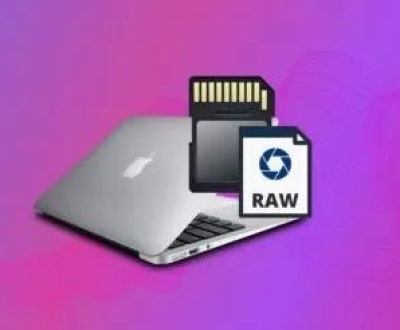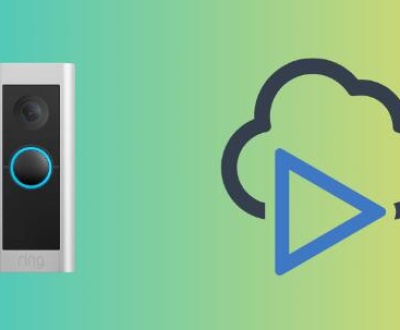Security cameras play a vital role in safeguarding properties, monitoring business operations, and ensuring public safety. However, one of the most frustrating and potentially dangerous issues users can encounter is video loss. This means your security camera isn’t displaying or recording footage as expected leaving you blind at critical moments.
Video Loss
What Is Video Loss?
Video loss refers to the failure of a security camera to deliver a video feed to the display device, recorder, or monitoring system. It can be partial (intermittent) or complete (permanent), and it may affect one camera, a group of cameras, or the entire system.

Video loss manifests in several ways:
A black screen with a “No Video” message
Freezing or stuttering images
Blurry or distorted visuals
Gaps in recorded footage
No playback despite camera being online
Understanding what causes these problems requires digging into the system’s hardware, wiring, network, software, and environmental conditions.
1. Power Supply Issues
A. Power Loss
The most common cause of video loss is insufficient or interrupted power to the camera or DVR/NVR.
Causes:
Unplugged power adapters
Burnt-out transformers
Loose connections
Power surges
Faulty or overloaded power strips
Solutions:
Check all power cords and ensure they’re securely plugged in.
Test with a multimeter to verify voltage.
Replace faulty power supplies.
Consider using an Uninterruptible Power Supply (UPS) for protection during outages.
B. Incompatible Power Supply
Using the wrong voltage or amperage can result in poor camera performance or no video at all.
Fix: Always match your camera’s voltage and current specifications. Use manufacturer-recommended power supplies.
2. Cabling and Wiring Problems
Wires are the lifeline of analog systems and power transmission for some IP cameras.
A. Loose or Damaged Cables
Physical damage or poor installation of cables can disrupt the video signal.
Common issues:
Frayed or cut coaxial or Ethernet cables
Crushed or kinked wires
Loose BNC connectors
Bent or broken pins on connectors
Solution: Inspect and replace damaged cables. Ensure connectors are properly secured.
B. Cable Length Limitations
Signals degrade over long cable runs, especially without boosters or proper specifications.
Limits:
Coaxial (RG59): ~300-500 feet
Cat5e/Cat6 Ethernet (PoE): ~328 feet
Fixes:
Use signal boosters, baluns, or repeaters.
Upgrade to higher-quality cabling.
Opt for fiber optics for very long runs.
3. Connectivity Issues
A. Network Problems (IP Cameras)
IP cameras rely heavily on stable network connections.
Common network issues:
Weak Wi-Fi signals
Router configuration errors
Overloaded bandwidth
IP address conflicts
Solutions:
Use wired connections for critical cameras.
Assign static IP addresses.
Upgrade routers or switches to support high-throughput devices.
Isolate camera traffic with VLANs or a dedicated network.
B. PoE Problems
PoE (Power over Ethernet) cameras get both power and data over one cable. When the PoE switch or injector fails, so does the video feed.
Fixes:
Test with another PoE port.
Check for proper voltage output.
Replace faulty injectors or switches.
4. Hardware Failures
A. Camera Failure
Cameras can fail due to age, exposure, or manufacturing defects.
Symptoms:
Camera won’t turn on
IR lights not activating at night
Persistent “No Signal” message
Fixes:
Test the camera with a different power supply and cable.
Reset the camera if possible.
Replace the unit if it’s dead.
B. DVR/NVR Malfunction
If your Digital Video Recorder (DVR) or Network Video Recorder (NVR) is failing, it may not receive or display video from your cameras.
Possible causes:
Overheating
Failing hard drives
Corrupt firmware
Board-level hardware failures
Solutions:
Power cycle the device.
Check for firmware updates.
Replace the hard drive if it’s clicking or not detected.
Consult the manufacturer for hardware diagnostics.
5. Software and Firmware Issues
A. Outdated Firmware
Old firmware may cause compatibility issues or performance degradation.
Fix: Check the manufacturer’s website for firmware updates and install the latest version compatible with your device.
B. Configuration Errors
Incorrect camera settings can cause video loss.
Examples:
Disabled video channels
Incorrect stream resolution
Invalid network settings
Fixes:
Access camera settings via web browser or app.
Reset to factory defaults if necessary.
Reconfigure stream settings for compatibility with your recorder.
6. Environmental Factors
A. Extreme Weather
Harsh conditions can damage outdoor cameras or disrupt connections.
Examples:
Rain infiltration
Snow and ice buildup
Excessive heat causing shutdowns
Fixes:
Use weatherproof (IP66 or higher) cameras and enclosures.
Install under cover or eaves.
Add heating or cooling accessories if needed.
B. Electromagnetic Interference (EMI)
Nearby electrical equipment or power lines can interfere with video signals.
Sources:
Microwave ovens
Generators
High-voltage transformers
Solutions:
Use shielded cables.
Route cables away from interference sources.
Ground the system properly.
7. Human Error
A. Accidental Disconnections
Simple mistakes like someone unplugging a wire can cause video loss.
Solution: Label wires and ports, and educate users about system components.
B. Incorrect Installation
Improper setup or DIY installations often lead to poor performance.
Fix: Follow manufacturer guides. If unsure, hire a professional installer.
8. Signal Compatibility and Resolution Mismatch
A. DVR/NVR Compatibility
Not all recorders support all camera types (TVI, CVI, AHD, CVBS, or IP).
Fix: Verify that your camera and DVR/NVR support the same video format.
B. Resolution Mismatch
If the camera outputs a resolution your DVR/NVR doesn’t support, you won’t see video.
Fix: Use a compatible resolution, or adjust settings using a test monitor.
9. Hard Drive and Storage Issues
A. Faulty Hard Drive
Even if the camera displays video, a bad hard drive can cause video loss during playback or recording.
Symptoms:
Skipping footage
Inability to review video
Recording errors
Fixes:
Replace or reformat the hard drive.
Use surveillance-grade drives.
B. Full Storage
When the drive is full, it may stop recording if not set to overwrite.
Fix: Enable auto-overwrite, or increase storage capacity.
10. Security and Cybersecurity Problems
A. Unauthorized Access
Hackers can disable cameras remotely or reconfigure them.
Fixes:
Change default login credentials.
Use firewalls and VPNs.
Keep firmware up to date.
B. Firmware Corruption
Malware or failed updates can brick a device.
Solution: Factory reset or re-flash the firmware if possible.
11. Mobile App or Client Software Glitches
A. App Bugs
Sometimes, video loss is simply a display issue on your phone or PC, not an actual camera problem.
Fixes:
Restart the app.
Reconnect to the server.
Reboot your phone or reinstall the app.
B. Server Downtime (Cloud Cameras)
If you use cloud cameras, the provider’s server may be offline.
Fix: Check status pages or support forums, and contact the provider.
How to Diagnose and Fix Video Loss
Step-by-Step Troubleshooting
Check the power: Make sure the camera and recorder have power.
Inspect connections: Verify cables are intact and connected.
Test the camera: Swap it with a known working one.
Verify network status: Ping IP addresses, check router logs.
Log into the system: Use the web interface or app to view diagnostics.
Check the display: Try a different monitor or HDMI/VGA cable.
Review recordings: Look for gaps or patterns in the footage.
Consult logs: Most NVRs/DVRs log video loss events.
Preventative Measures
Routine Inspections: Check wiring, connectors, and camera housings regularly.
Backup Power: Install UPS units to prevent power-related losses.
Use Surge Protectors: Protect devices from lightning or electrical faults.
Update Regularly: Keep software and firmware up to date.
Secure Network: Use strong passwords, encrypted connections, and VPNs.
Environmental Protection: Install weatherproof enclosures for outdoor units.
When to Seek Professional Help
If you’ve tried all troubleshooting steps and the issue persists, it may be time to call a professional. Look for certified security system installers or the camera manufacturer’s support team.
Professional services are particularly useful for:
Large-scale systems
Complex networking setups
Surveillance integration with alarms or access control
Legal or forensic video recovery
Video loss in security cameras can result from a wide variety of issues—ranging from something as simple as a loose cable to more complex problems like corrupted firmware or environmental damage. The key to resolving these issues is a structured, methodical approach to troubleshooting that addresses each potential source, one by one.
About us and this blog
Panda Assistant is built on the latest data recovery algorithms, ensuring that no file is too damaged, too lost, or too corrupted to be recovered.
Request a free quote
We believe that data recovery shouldn’t be a daunting task. That’s why we’ve designed Panda Assistant to be as easy to use as it is powerful. With a few clicks, you can initiate a scan, preview recoverable files, and restore your data all within a matter of minutes.
Subscribe to our newsletter!
More from our blog
See all postsRecent Posts
- Retrieve photos from sd card 2025-04-25
- Failure when attempting to copy boot files 2025-04-25
- How to get a local copy of all pdm files? 2025-04-25

 Try lt Free
Try lt Free Recovery success rate of up to
Recovery success rate of up to









